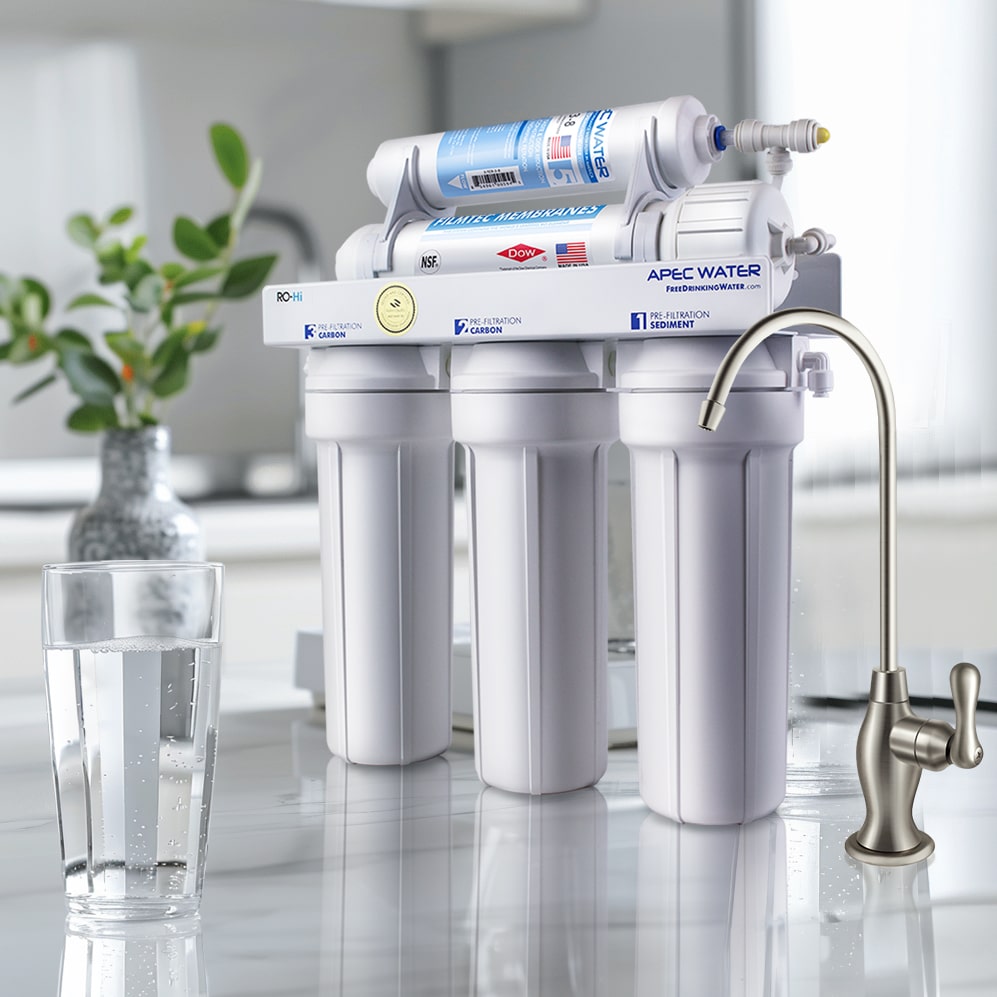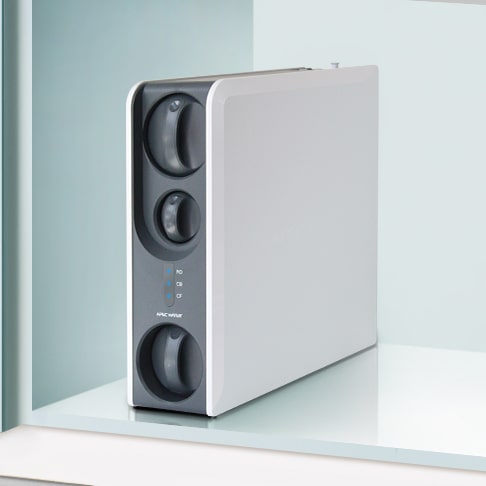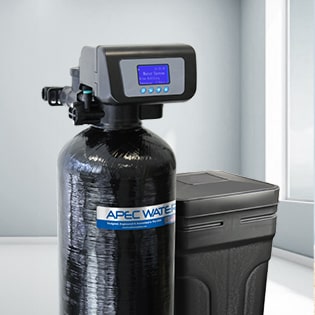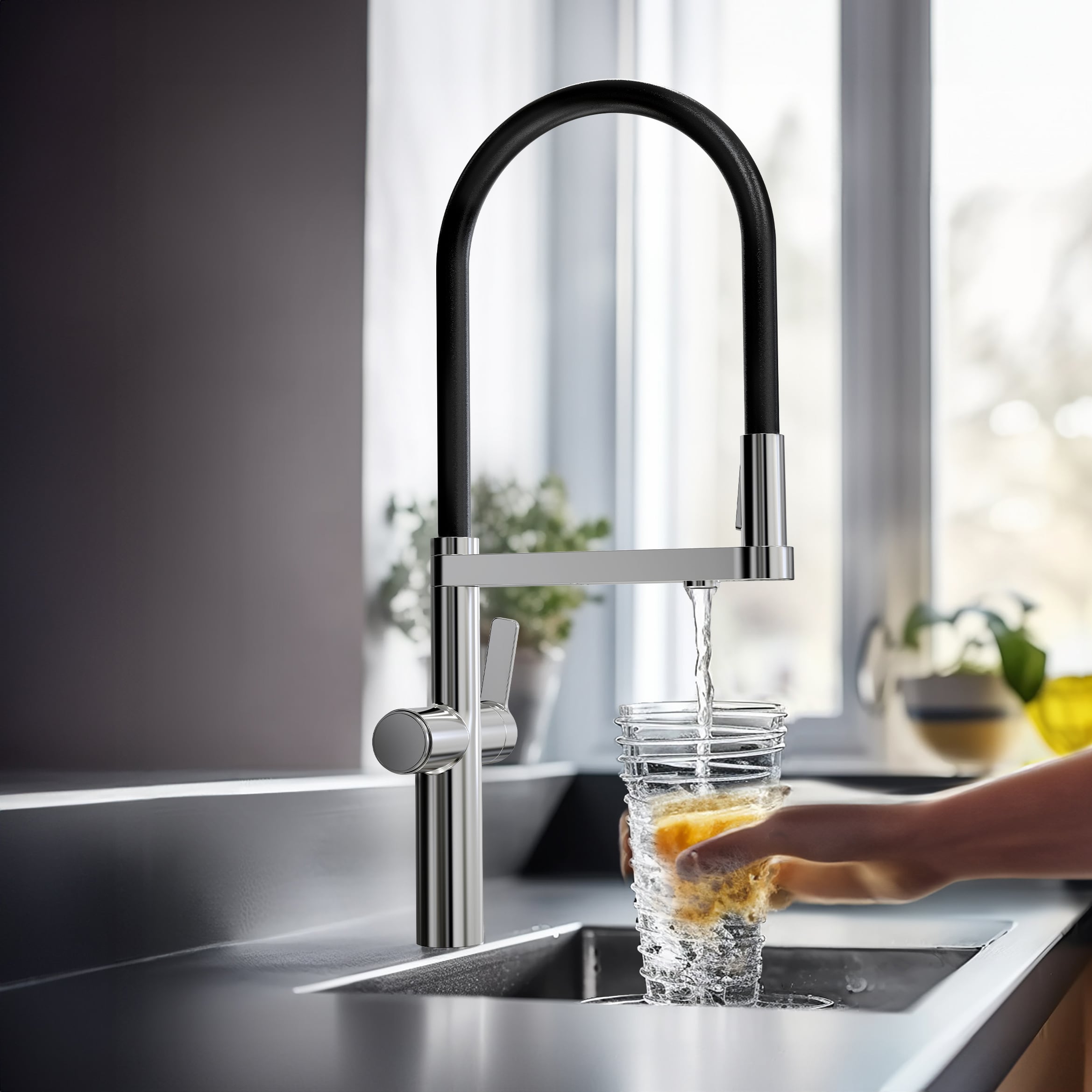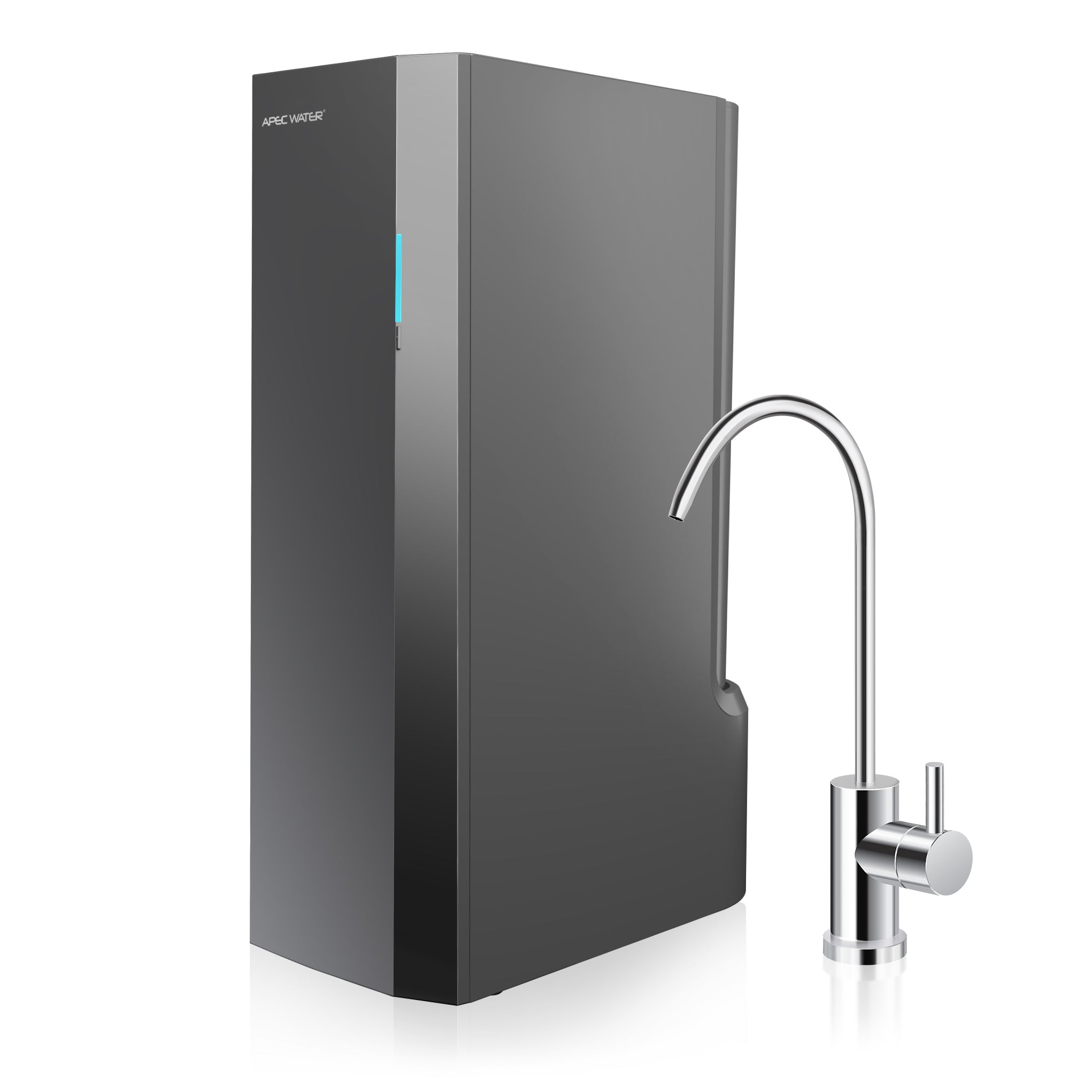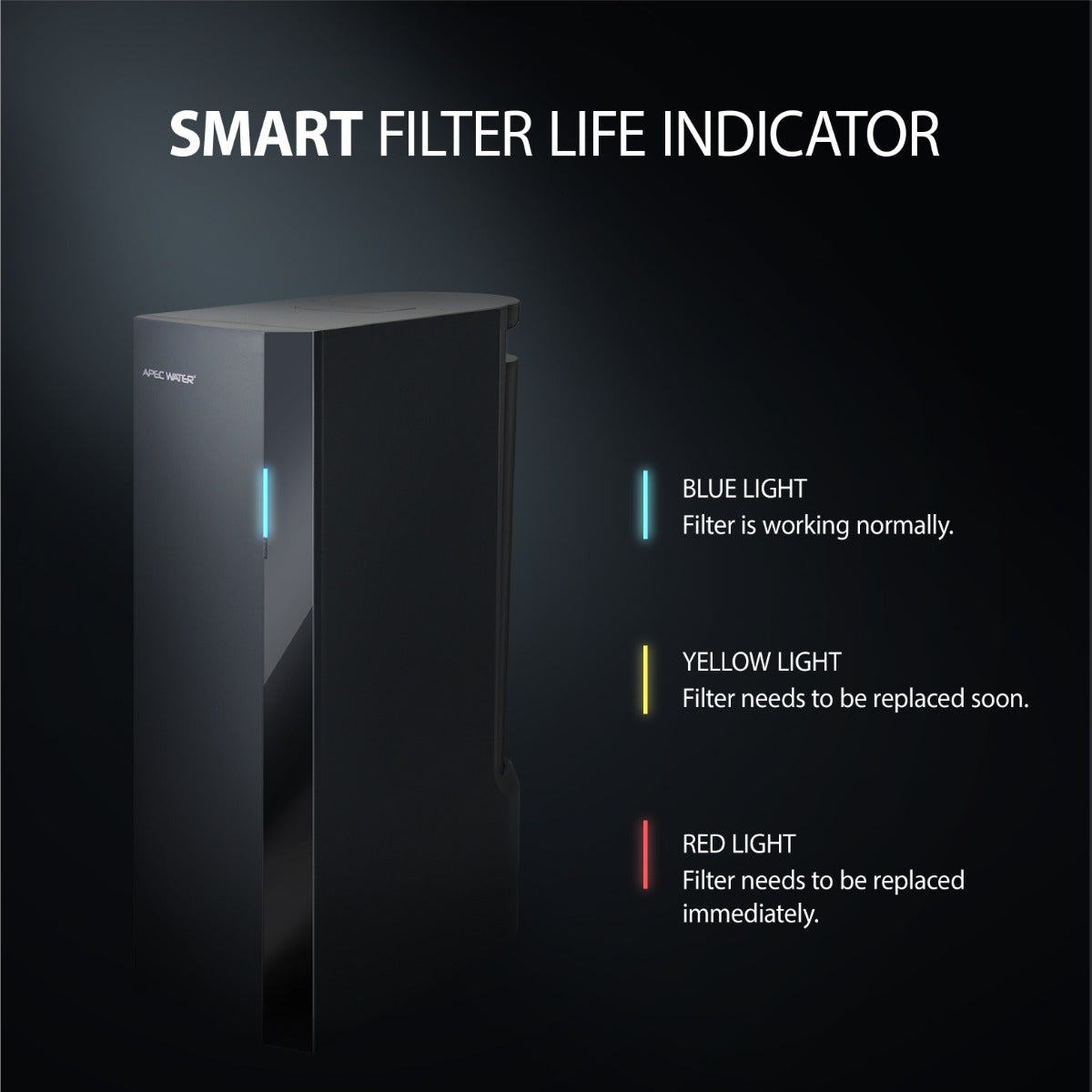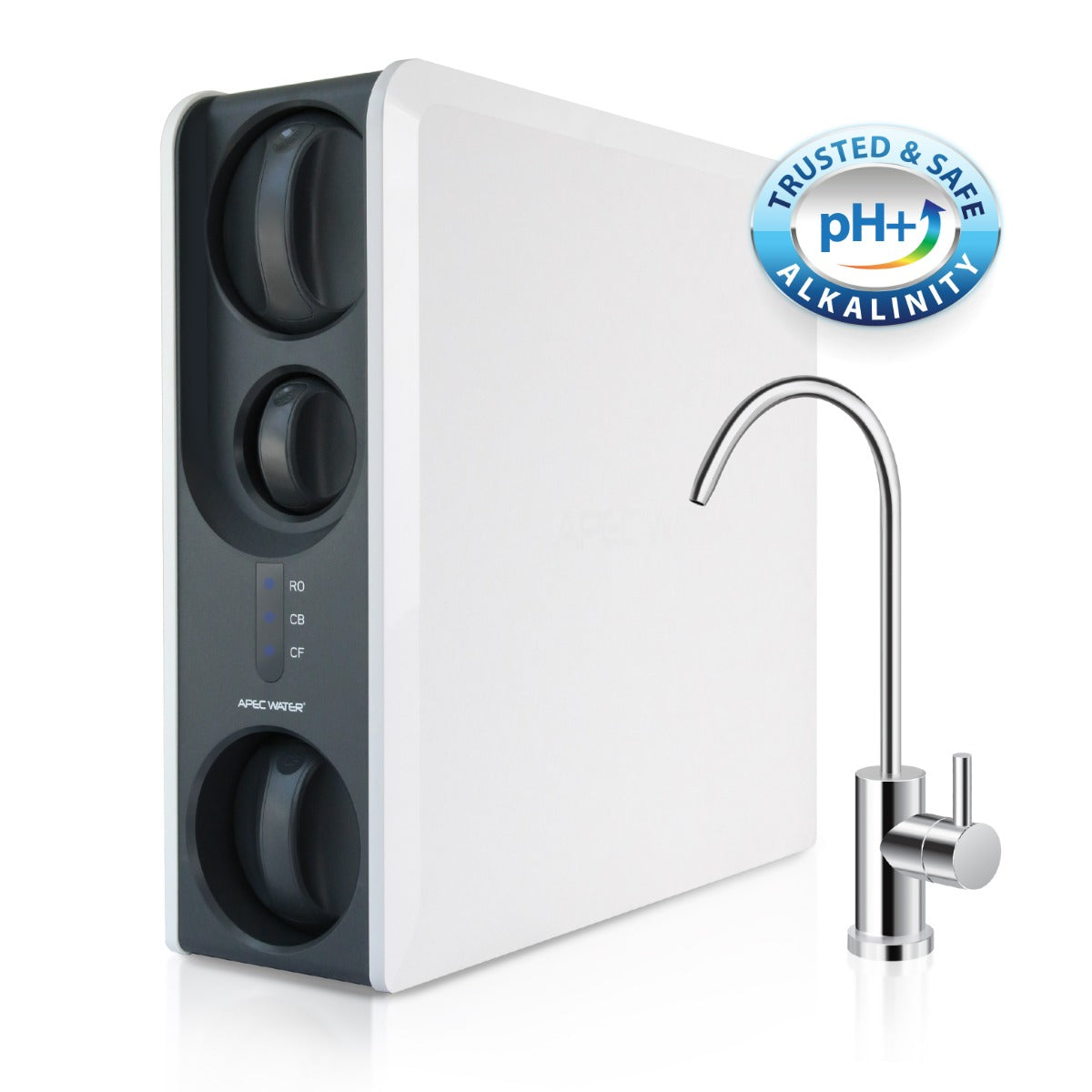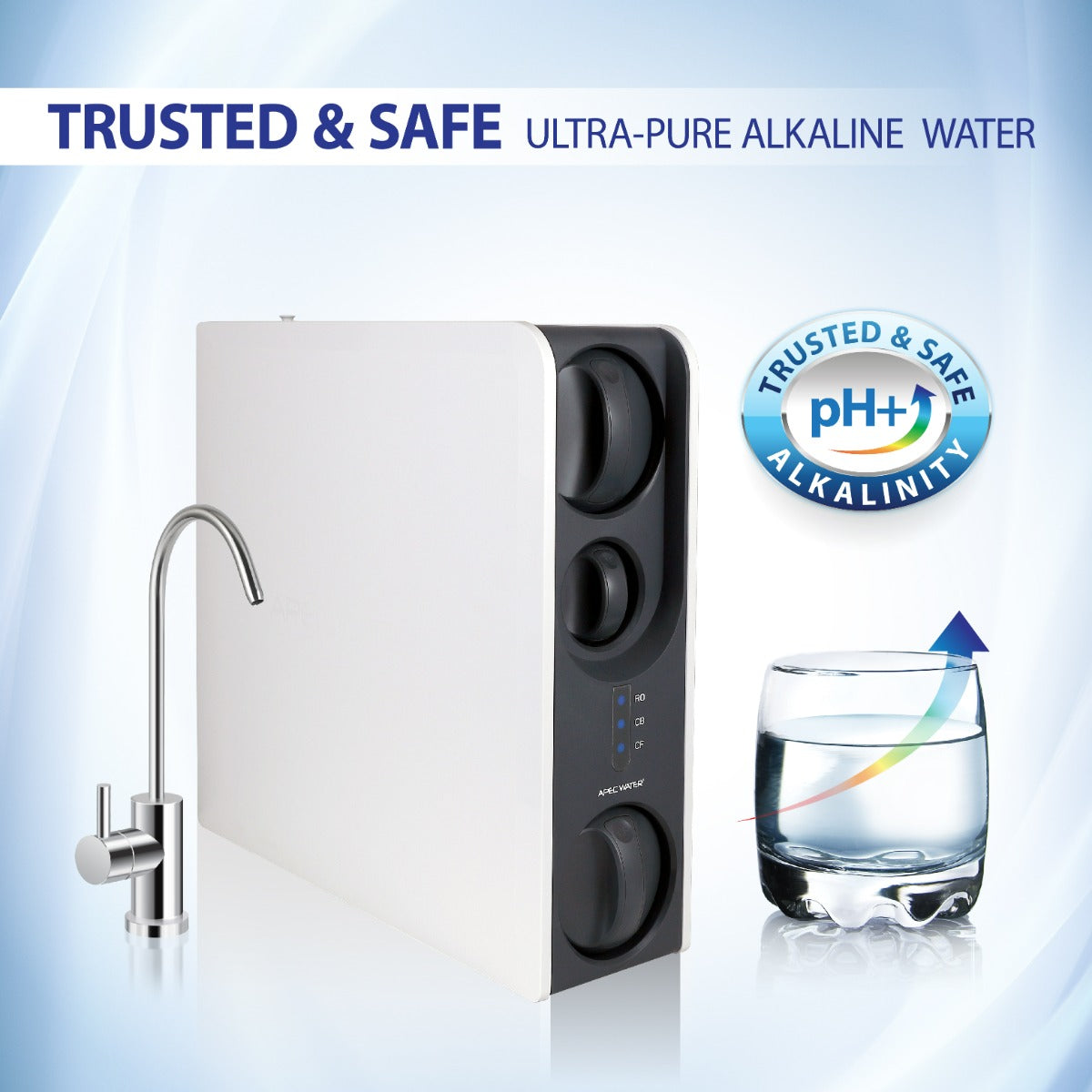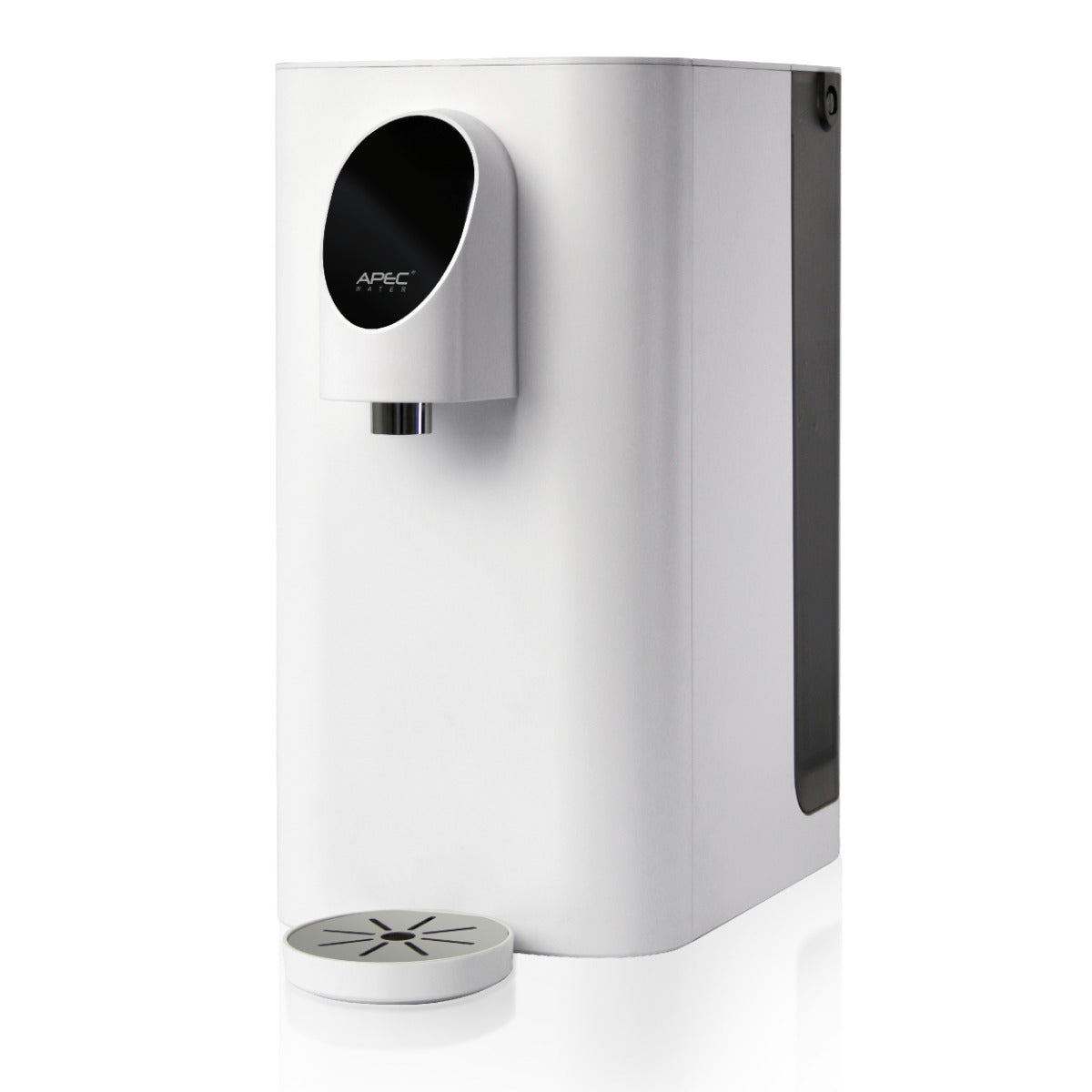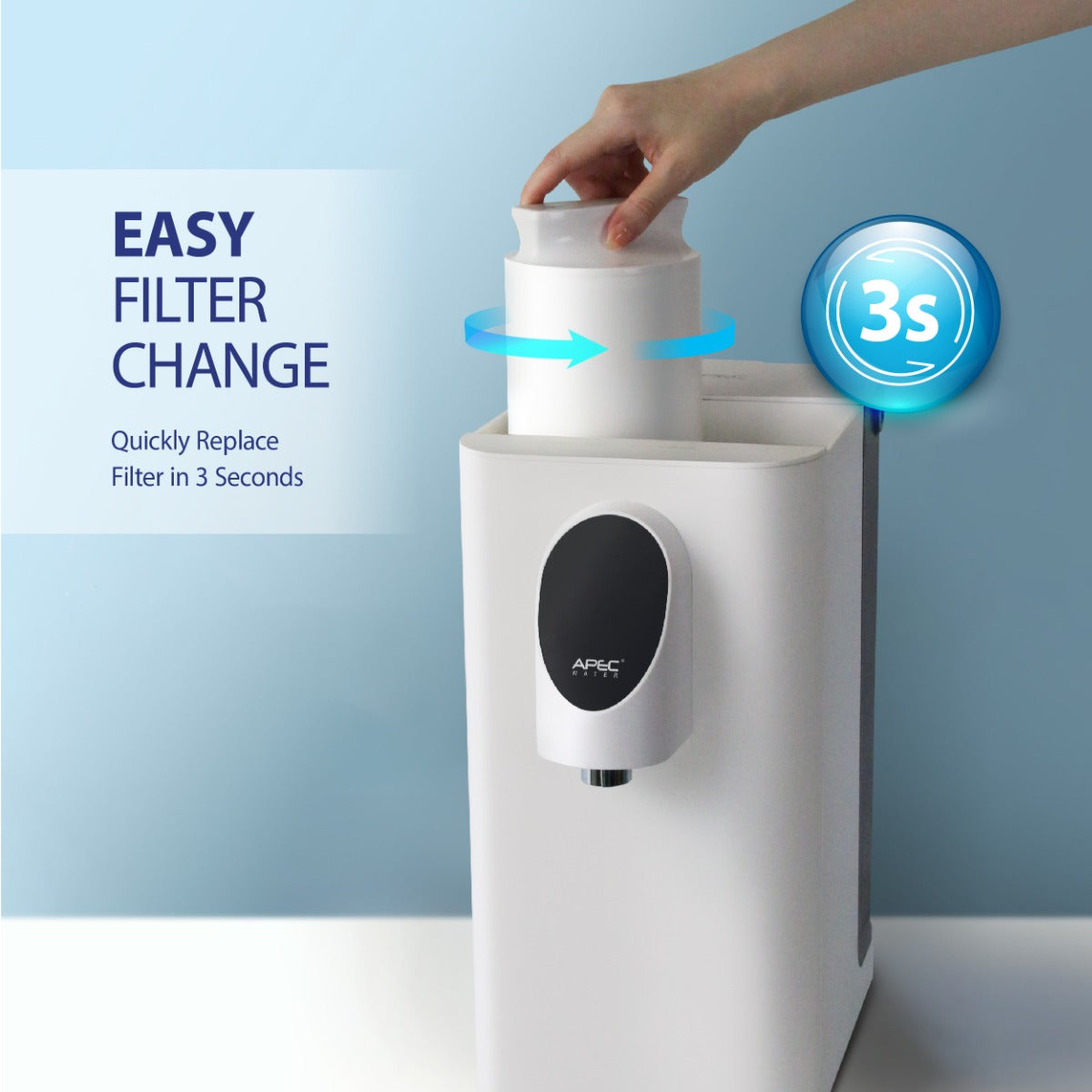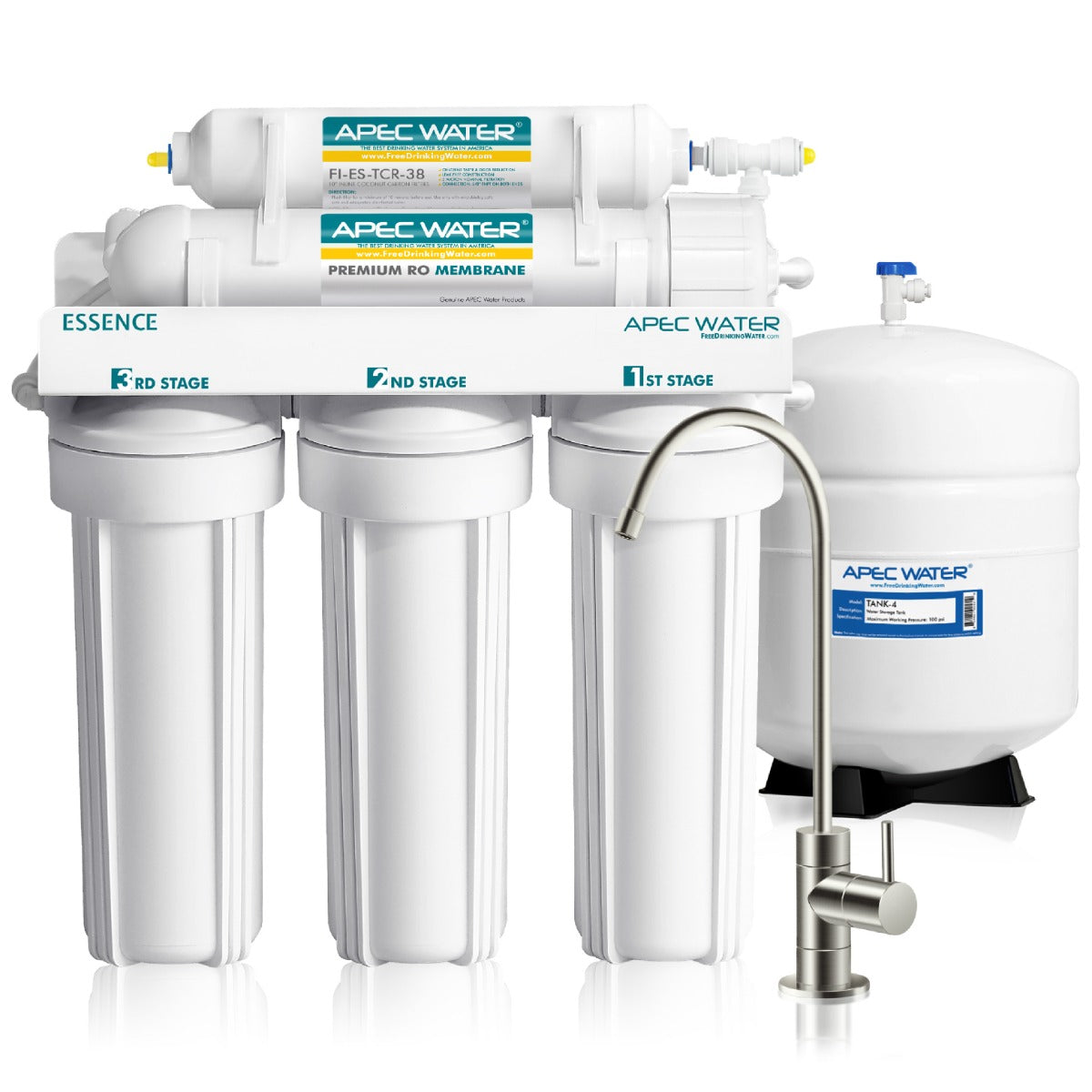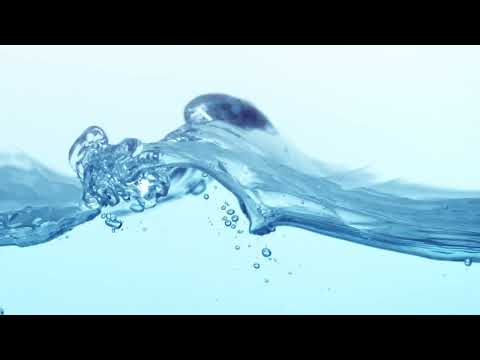Shop by Collection
Staff's Pick
Advanced Purification Engineering Corp.
Reverse Osmosis Water Filter Systems
What Is Reverse Osmosis?
Osmosis is the natural tendency of water molecules to move through a semipermeable membrane in a way that results in an equal concentration of any substances dissolved in the water (such as salts or ions) on both sides of the membrane.
As the name suggests, reverse osmosis takes this process and reverses it, using pressure to push water through a semipermeable membrane that blocks larger particles from passing. This results in pure water on one side of the membrane, with almost all contaminants left behind on the other.
Your tap water, though deemed drinkable by local processing facilities, is likely not free from impurities. A reverse osmosis water filter system removes unwanted inclusions like dirt, bacteria, salts, and minerals from your home water source so your water is cleaner, healthier, and better tasting.
How Does an RO System Work?
An RO system connects to your tap water line and uses a sophisticated process to purify the water. This process can be broken down into three key steps.
1. Pre-Filtration
First, water enters the system and passes through a series of filters designed to remove larger particles from the water. They remove substances like:
- Sand
- Dirt
- Rust
- Chlorine
2. Reverse Osmosis
Next, high-pressure pumps force the water through a semipermeable membrane. The membrane allows pure water to pass through while filtering out particles like salts, minerals, metals, and most bacteria and viruses.
When the process is complete, one side of the membrane will have pure water, and the other side will have leftover water with a higher concentration of contaminants. This unfiltered water is released down your drain.
After this step, some systems may use additional specialty filters to pick up any remaining contaminants or a remineralizing filter to add back healthy minerals.
3. Storage
Once the water has been completely filtered, a typical RO system with a storage tank will collect the water. Then, anytime you turn on the faucet for filtered water, you’ll have a supply ready for your use—no need to wait for water to go through the filtration process.
Why Do You Need an RO System?
An RO system brings an array of benefits to your home from the moment it’s installed.
- Water tastes better without salts, minerals, or metals.
- Filtered water is better for cooking because it doesn’t have inclusions that could affect the taste of your recipes.
- There are many health benefits to RO filtration, as contaminants that could harm you in the long run (like heavy metals and bacteria) are removed from your drinking water.
- Filtered water is far better for pets to drink and for aquarium animals to live in.
- An RO system means you don't need to buy water bottles or have a pitcher filter that takes up a lot of space in your fridge.
- RO is more comprehensive than most other types of filtration, which usually only remove a limited range of contaminants.
The advantages of using an RO system are undeniable. The main question is, which type is right for you?
3 Types of RO Systems
APEC offers RO systems in all shapes and sizes to suit different needs. Here are the three main types of RO systems you can choose from.
1. Tankless RO Systems
Tankless RO systems are among the most convenient because they’re small enough to fit almost anywhere. They don’t have a water reservoir, so they’re compact and visually pleasing. However, they need a 110 V outlet, as they operate with electricity.
These systems are built for everyday consumers with an extremely easy filter-changing process. You can replace a used filter in just a few seconds—just twist and pull to remove, then push on the new filter.
2. Traditional RO Systems
A traditional RO system has a tank that holds 4 gallons of water, so the water dispenses faster than from a tankless system. It also ensures you always have clean water available, even if your water supply is temporarily shut off. It does, however, require more space than other options.
If you feel intimidated by this system, don’t be. Even though it's bigger than a tankless system, it actually has a simpler configuration. You can clearly see all parts of the system, making it easy to identify problems.
3. Countertop RO Systems
A countertop RO system is a perfect option for renters and small spaces. It takes up very little space and is easy to install and maintain.
The system operates with electricity and has a water reservoir you fill instead of connecting to your tap water supply. It can also dispense hot water thanks to preset and custom temperature settings.
FAQ
What Substances Are Filtered Through RO Systems?
An effective RO system can remove many substances, such as:
- Chlorine
- Salts
- Sediment (such as tiny dirt or sand particles)
- Some bacteria and viruses
- Metals
- Minerals
- Arsenic
What Is the Lifespan of an RO System?
An RO system can last up to 10 years if maintained properly. However, the filters will need to be changed according to the instructions that come with your system (usually every year).
Is RO Filtered Water ‘Pure Water’?
Hardly any water on this planet can be considered completely “pure.” Even water found in the heart of a glacier or a mountain spring will have salts or minerals picked up from the earth. However, RO filtration can remove up to 99% of contaminants from water, making it the purest water you can get inside your home.
Is RO Filtered Water the Same as Distilled Water?
While distillation and reverse osmosis systems produce water cleaner than you would normally get out of your tap, the treatment processes are completely different.
To create distilled water, the water is boiled and evaporated, leaving dissolved solids behind. The vapor is then condensed, and the clean water is collected in another container.
RO filtration uses pumps and a semipermeable membrane to produce clean water.
While you can find both distilled water and RO-filtered water in stores and at home, RO water filtration systems are much more practical and common.
Can Bacteria Grow in an RO System?
Yes, bacteria can grow, particularly in traditional RO systems, if they are not periodically sanitized and properly maintained according to the manufacturer’s instructions. Tankless systems are less prone to bacterial growth, which is most likely to happen in a storage tank.
Choose APEC RO Water Filtration Systems
You deserve to have clean water for your home. You don’t always have control over what’s included in your tap water, but with an RO system, you’ll have the peace of mind that your water is as pure as it can be.
Ready to enjoy filtered, clean water from home? Shop our reverse osmosis water filtration systems!
Shop the Finest Reverse Osmosis System in America
The water you and your family drink every day is indispensable to your health. But how do you ensure your water is clean and free of harmful contaminants?
Reverse osmosis is the answer. A reverse osmosis (RO) water filter system provides your home with pure, clean water—without the waste or expense of plastic bottles. At APEC Water, we offer a wide range of affordable, high-quality RO filtration systems. Learn how a reverse osmosis system works and what options are available for you.
